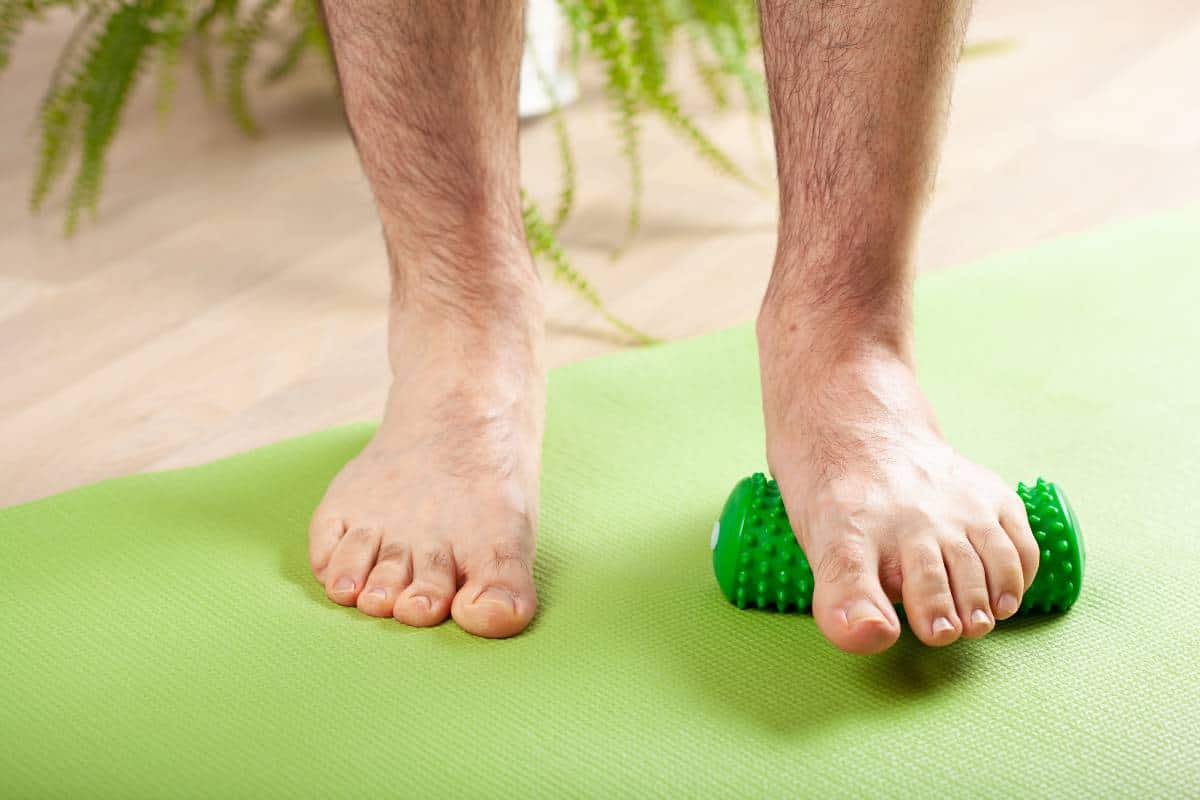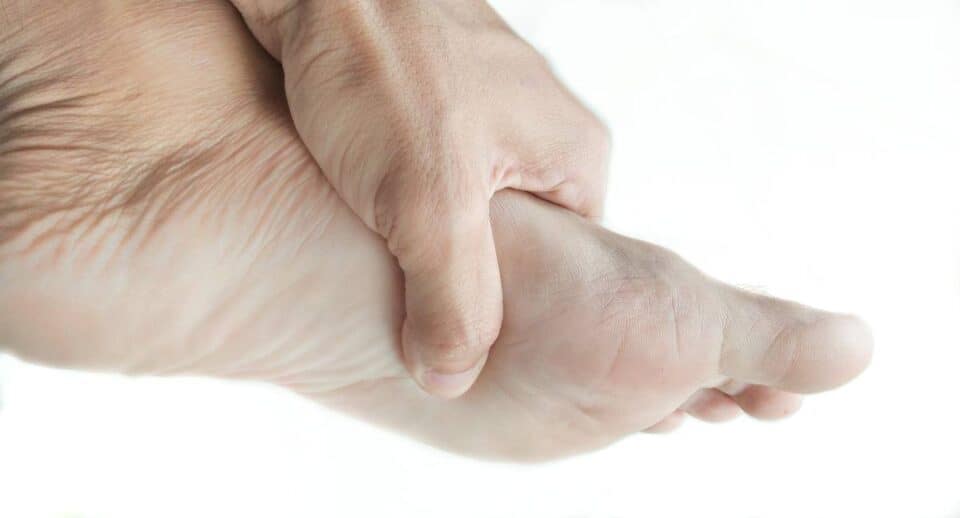With my matured experience in treating neuromuscular conditions, I’ve seen firsthand how early intervention can make a dramatic difference in patient outcomes for those suffering from peripheral neuropathy. This condition affects between 20 to 30 million Americans, making it one of the most common neurological health challenges we face today. In our Mt. Pleasant practice, I frequently encounter patients who wish they had recognized the signs sooner. Today, I want to share crucial information about early intervention in foot neuropathy that could help you or your loved ones maintain better nerve health.
Key Takeaways
- Early detection and intervention in neuropathic pain can significantly improve outcomes for patients.
- About 2.4% of the general population is affected by peripheral neuropathy,1 with rates increasing to 20% in those over 60
- Regular monitoring and preventive care are essential for managing foot neuropathy effectively
Claim Your Free 10-Minute Neuropathy Relief Consultation
Foot neuropathy holding you back? Our expert chiropractors offer a free 10-minute consultation to explore natural relief options. Don’t wait – schedule your complimentary session and take the first step towards pain-free living today.
Understanding Foot Neuropathy
In my years of practice, I’ve observed that peripheral neuropathy affects a surprisingly large number of people – approximately 2.4% of the general population. What’s particularly concerning is how this percentage increases with age, reaching up to 20% in patients over 60 years old. This condition, which affects the nerves in your feet and other extremities, can be particularly challenging if not caught early.
The three main types of nerve damage I commonly see include:
- Motor neuropathy causes muscle weakness and affects movement2
- Sensory neuropathy impacting feeling and sensation3
- Autonomic nerve problems affecting bodily functions4
Recent research has shown that the progression of nerve damage follows a predictable pattern, which is why early intervention is crucial. I’ve noticed that patients who seek treatment at the first sign of symptoms typically have much better outcomes.
Early Neuropathy Symptoms and Detection
As a healthcare provider, I can’t stress enough the importance of recognizing early warning signs. The most common early indicators I’ve witnessed include:
- Tingling or “pins and needles” sensations
- Numbness in the feet
- Slight balance issues
- Unusual pain or burning sensations
Prevention Strategies
In the BodyFix, I’ve developed a comprehensive approach to prevention that focuses on several key areas. Blood sugar control is paramount, and I work with patients to establish regular A1C testing and proper meal timing to prevent diabetic neuropathy progression. Physical activity plays a crucial role – I recommend a consistent exercise routine to improve circulation and nerve function. Proper hydration and balanced nutrition, particularly focusing on key vitamins, are fundamental for maintaining nerve health and supporting repair functions.
Protective Measures
A crucial aspect of neuropathy management involves proper footwear selection and foot care routines to prevent symptoms of peripheral neuropathy. In my practice, I emphasize the importance of properly fitted supportive shoes to prevent injury and pressure points.
The right footwear can significantly impact treatment outcomes and overall foot health. I’ve written extensively about this topic in my comprehensive guide, “The Right Shoes for a Healthier You: A Chiropractor’s Perspective” , where I detail the importance of features like zero drops and wide toe boxes for optimal foot health.
For neuropathy patients specifically, proper footwear becomes even more critical. I instruct patients to perform daily foot inspections and maintain proper hygiene, keeping their feet clean and dry to prevent complications associated with chronic pain.
Regular movement breaks throughout the day are essential for maintaining good circulation. When selecting shoes, pay particular attention to features that promote natural foot movement and proper weight distribution, as these can significantly impact nerve health and overall comfort.
Alternative Approaches
I’ve also found success incorporating alternative approaches into treatment plans for managing nerve pain. This includes targeted nutritional supplementation for nerve health support, stress management techniques like meditation and relaxation exercises, and gentle movement practices such as yoga or tai chi for improving balance and coordination. Mindfulness techniques have proven particularly effective in helping patients manage their symptoms.
Treatment Protocols and Monitoring
My approach to treatment is highly individualized, beginning with a comprehensive initial assessment that includes nerve function testing, pain evaluation, medical history review, and physical examination.
This establishes our baseline and guides treatment planning. For ongoing medical management, I typically see patients weekly or bi-weekly, focusing on pain control strategies, specialist coordination when needed, supplementation review, and progress monitoring.
Physical Therapy Components
The physical therapy aspect of treatment is crucial, and I usually recommend 2-3 sessions per week focusing on balance training, strength exercises, gait correction, and proprioception work. Throughout treatment, we continuously adapt the plan based on age-specific needs, lifestyle factors, and occupational demands.
Progress Monitoring
In my practice, I track several key areas to ensure optimal outcomes. We regularly assess pain management through detailed pain scales and activity-related pain mapping. Physical function is evaluated through balance testing, muscle strength assessments, range of motion measurements, and gait analysis.
Sensory function is monitored through comprehensive testing of light touch, pin prick, vibration, and pressure sensitivity. We also track daily activities and quality of life measures to ensure the treatment is effectively improving overall function and well-being.

Risk Management and Environmental Considerations
My approach to risk management is comprehensive, addressing multiple aspects of patient care. From a medical perspective, we closely monitor blood sugar levels, circulation status, previous injuries, and supplementation effects through regular screenings and coordinated care with other providers.
Environmental considerations are equally important – I work with patients to evaluate their home and workplace setups, focusing on proper lighting, appropriate floor surfaces, and the removal of potential hazards.
Critical Monitoring Points
Daily monitoring includes skin integrity, temperature sensitivity, pain levels, and activity tolerance. Weekly checks focus on comprehensive foot inspection, balance assessment, strength changes, and range of motion evaluation. I emphasize to my patients the importance of recognizing emergency warning signs, including sudden severe pain, unexplained wounds, significant balance changes, and rapid loss of sensation, which may indicate serious issues with the nervous system.
Advanced Treatment Options and Current Research
As our field continues to evolve, I stay current with the latest developments in neuropathy treatment. Promising advances include targeted physical therapy protocols, innovative pain management techniques, and emerging research in nerve regeneration and cellular repair5. I’m particularly excited about several ongoing clinical trials showing promise for peripheral nerve regeneration, though I maintain focus on evidence-based treatments that have proven effective in my practice.
Patient Education and Self-Management
Daily Care Protocol
I’ve developed a comprehensive daily care protocol for my patients. Morning routines should include thorough foot inspection, gentle stretching exercises, and proper sock and shoe selection. Evening protocols focus on temperature checks, moisture control, and light exercises. I recommend several reliable apps and online tools for symptom tracking, exercise guidance, progress monitoring, and educational resources.
Special Population Considerations
Different patient groups require unique approaches to neuropathy management. For elderly patients, we focus heavily on fall prevention, simplified exercise routines, regular monitoring, and family involvement. Active individuals receive sport-specific modifications, performance-maintaining exercises, protective equipment recommendations, and recovery strategies. Working professionals benefit from ergonomic workspace solutions, break-time exercises, stress management techniques, and practical lifestyle adjustments.
Special Considerations for Neuropathy Management
Let me share what I’ve learned about managing neuropathy across different patient groups. Through years of treating diverse patients, I’ve found that each person’s situation requires a unique approach. What works perfectly for a young athlete might not suit a retiree or someone spending long hours at a desk.
Age-Specific Guidelines
When it comes to our older patients, especially those over 65, we need to think differently about neuropathy management. Falls become a major concern, so we focus heavily on balance training, but we do it smartly – exercises are often done while sitting or near something sturdy to hold onto. I always tell my older patients that medication management becomes extra important at this stage. Having the proper Medical Doctor to constantly monitor medications and its inter-reactions is very important.
Memory can also become a factor as we age, so we make sure to keep self-care routines simple and consistent.6 I’ve found that getting family members or caregivers involved makes a huge difference. We teach them the ins and outs of foot care and what warning signs to watch for. And let’s not forget about making the home safer – good lighting, clear walking paths, and handrails can be game-changers.
Activity Level Adaptations
Now, when I work with athletes and active individuals, we face a different set of challenges. If you’re used to running marathons or playing tennis every weekend, hearing that you need to modify your routine can be tough. But here’s the good news: we can usually find ways to keep you active while protecting your nerves. For instance, I’ve helped many runners discover that mixing in swimming or cycling not only maintains their fitness but gives their feet a much-needed break.
For competitive athletes, we get creative with modifications. We might work with a podiatrist to design custom orthotics specifically for your sport. We’ll look at your training schedule and build in recovery time that protects your nerves without sacrificing performance. I always recommend paying special attention to your feet before and after training – checking temperature, looking for pressure points, and taking time to cool down properly.
Workplace Modifications
The workplace presents its own unique challenges, especially if you’re spending long hours on your feet or sitting at a desk. For my patients who work in offices, we focus on creating an ergonomic setup that supports healthy nerve function. Standing desks can be great, but we make sure to use anti-fatigue mats and take regular movement breaks. The key is finding a balance between staying productive and protecting your nerve health.
For those working in industrial settings, we take a careful look at your daily routine. Safety boots are essential, but they need to provide the right kind of support and cushioning. I work with patients to develop strategies for managing long shifts, like changing positions regularly and using anti-vibration equipment when possible.
In the service industry, where you might be on your feet for hours at a time, we focus on managing pressure and circulation. Compression socks can make a huge difference7, and we work on finding opportunities for brief sitting breaks throughout your shift. I’ve helped many nurses and retail workers modify their routines to protect their feet while maintaining their high level of service.
Implementation Strategies
Success in managing neuropathy really comes down to finding what works for you and staying consistent with it. I check in with my patients regularly to see how their modifications are working and if we need to make any changes. Sometimes what sounds great in theory needs some tweaking in practice.
Monitoring and Adjustment
I’ve learned that keeping track of how you’re feeling is crucial. We want to know if pain levels change during certain activities, if you notice any new sensations, or if your balance feels different. This information helps us fine-tune your treatment plan. Every few months, we’ll do a thorough review to make sure we’re on the right track, though we might check in more often if you’re trying something new or notice significant changes.
Education and Support
Knowledge really is power when it comes to managing neuropathy (It can help with anxiety too!)8
I make sure my patients understand not just what to do, but why they’re doing it. Whether it’s understanding how certain movements affect your nerves or knowing when to reach out for help, having this information makes a huge difference. I also encourage connecting with others who have similar experiences – sometimes the best tips come from people who’ve walked in your shoes.
The key to success is remembering that managing neuropathy is a journey we’re on together. By tailoring our approach to your specific situation – whether you’re retired, running marathons, or working long shifts – we can help you maintain your quality of life while keeping your nerves as healthy as possible.

Class IV Laser Therapy and Chiropractic Care for Foot Neuropathy
Early intervention using these advanced treatment modalities can significantly impact patient outcomes, and I frequently see patients who wish they had started treatment sooner.
The Power of Summus Class IV Laser Therapy
Our state-of-the-art Summus Class IV Laser Therapy represents a significant advancement in neuropathy treatment. This cutting-edge technology uses high-intensity laser light to penetrate deep into tissues, delivering powerful therapeutic effects. The laser works by stimulating cellular regeneration and increasing blood flow to affected areas, providing both immediate pain relief and long-term healing benefits.
Our Specialized Neuropathy Protocol
For optimal results with neuropathy patients, we have a specific protocol consisting of 18 laser therapy sessions. These treatments are administered 2-3 times per week for 30 minutes over a 6-7 week period. This frequency allows for cumulative healing effects while maintaining consistent progress. Each session is carefully monitored and adjusted based on individual patient response.
Claim Your Free 10-Minute Neuropathy Relief Consultation
Foot neuropathy holding you back? Our expert chiropractors offer a free 10-minute consultation to explore natural relief options. Don’t wait – schedule your complimentary session and take the first step towards pain-free living today.
FAQs
How quickly should I seek treatment after noticing symptoms?
Can foot neuropathy be reversed?
How often should I have my feet checked if I’m diabetic?
What exercises are safe with early neuropathy?
How can I prevent neuropathy from getting worse?
Conclusion
As a healthcare provider dedicated to improving lives through better nerve health, I’ve seen how early intervention in foot neuropathy can make a dramatic difference in outcomes. The key is recognizing symptoms early and taking prompt action. With proper care and management, many of my patients maintain active, fulfilling lives despite their diagnosis.
Don’t wait until symptoms become severe. If you’re experiencing any signs of foot neuropathy, or if you’re at risk due to diabetes or other conditions, I invite you to schedule a consultation with me. Together, we can develop a personalized plan to protect your nerve health and maintain your quality of life.
- https://www.ncbi.nlm.nih.gov/books/NBK542220/ ↩︎
- https://www.ncbi.nlm.nih.gov/books/NBK554524/ ↩︎
- https://www.ncbi.nlm.nih.gov/books/NBK559020/ ↩︎
- https://www.niddk.nih.gov/health-information/diabetes/overview/preventing-problems/nerve-damage-diabetic-neuropathies/autonomic-neuropathy ↩︎
- https://www.ncbi.nlm.nih.gov/pmc/articles/PMC9983644/ ↩︎
- https://www.nia.nih.gov/health/memory-loss-and-forgetfulness/memory-problems-forgetfulness-and-aging ↩︎
- https://pmc.ncbi.nlm.nih.gov/articles/PMC11193973/ ↩︎
- https://www.ncbi.nlm.nih.gov/pmc/articles/PMC8010286/ ↩︎
Blog Disclaimer: The information provided on The BodyFix Chiro blog is for general informational and educational purposes only and is not intended as medical advice. These articles reflect our opinions and experiences but should not be used to diagnose or treat any health conditions. Always consult with your physician, chiropractor, or other qualified healthcare provider before starting any new treatment, exercise program, or making changes to your health routine. Any actions you take based on information from this blog are entirely at your own risk, and The BodyFix Chiro and its contributors disclaim any liability for the decisions you make based on this information.




